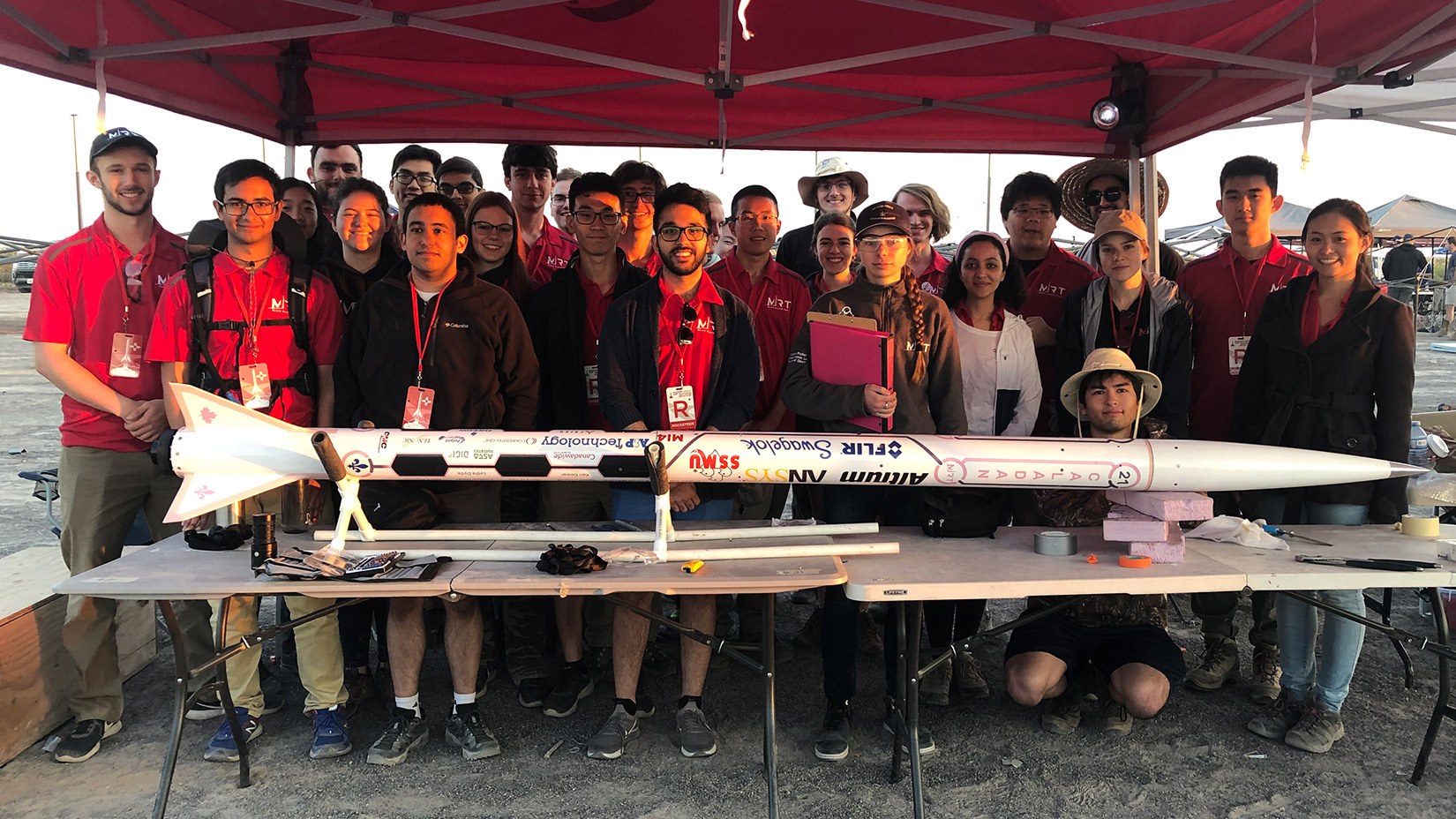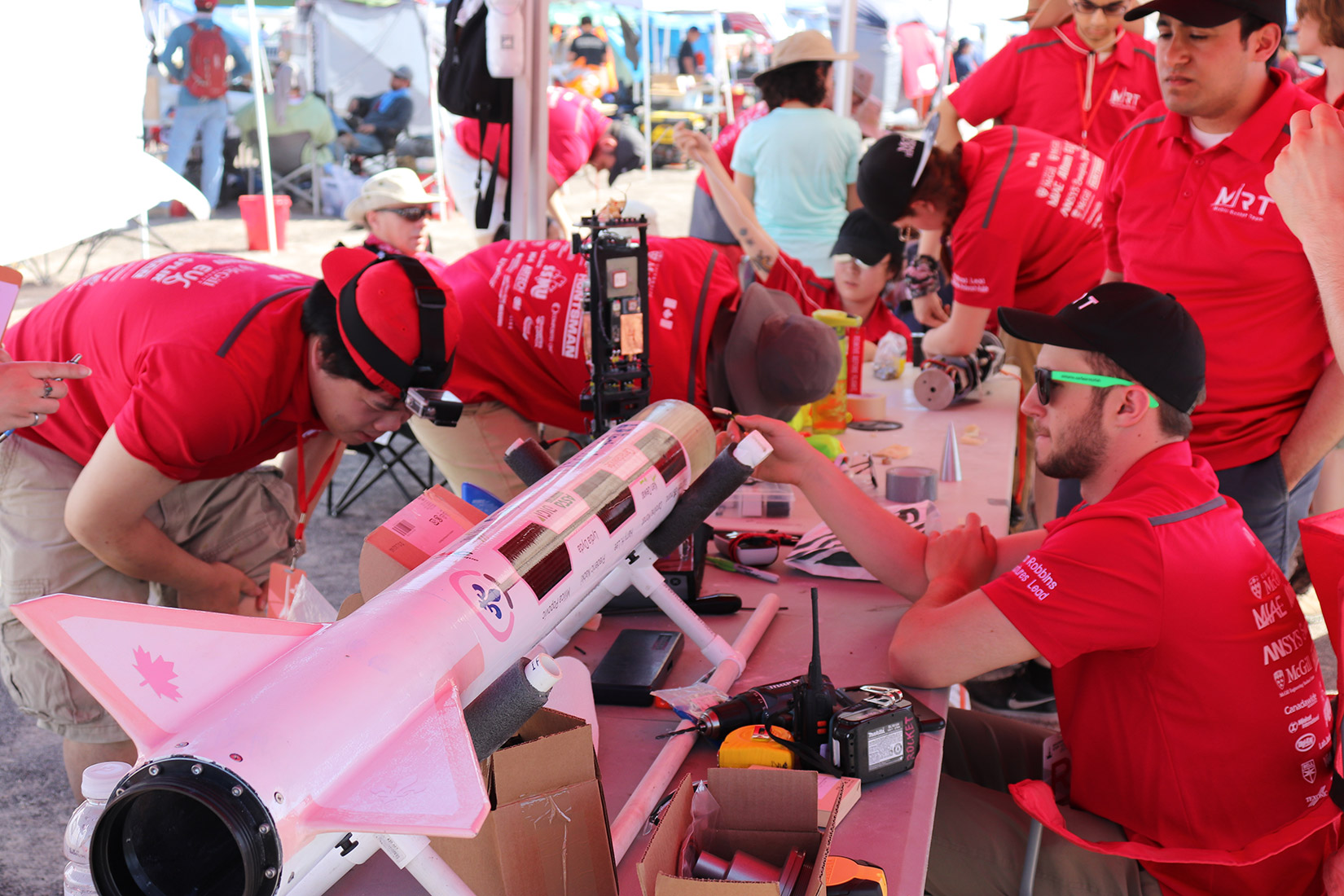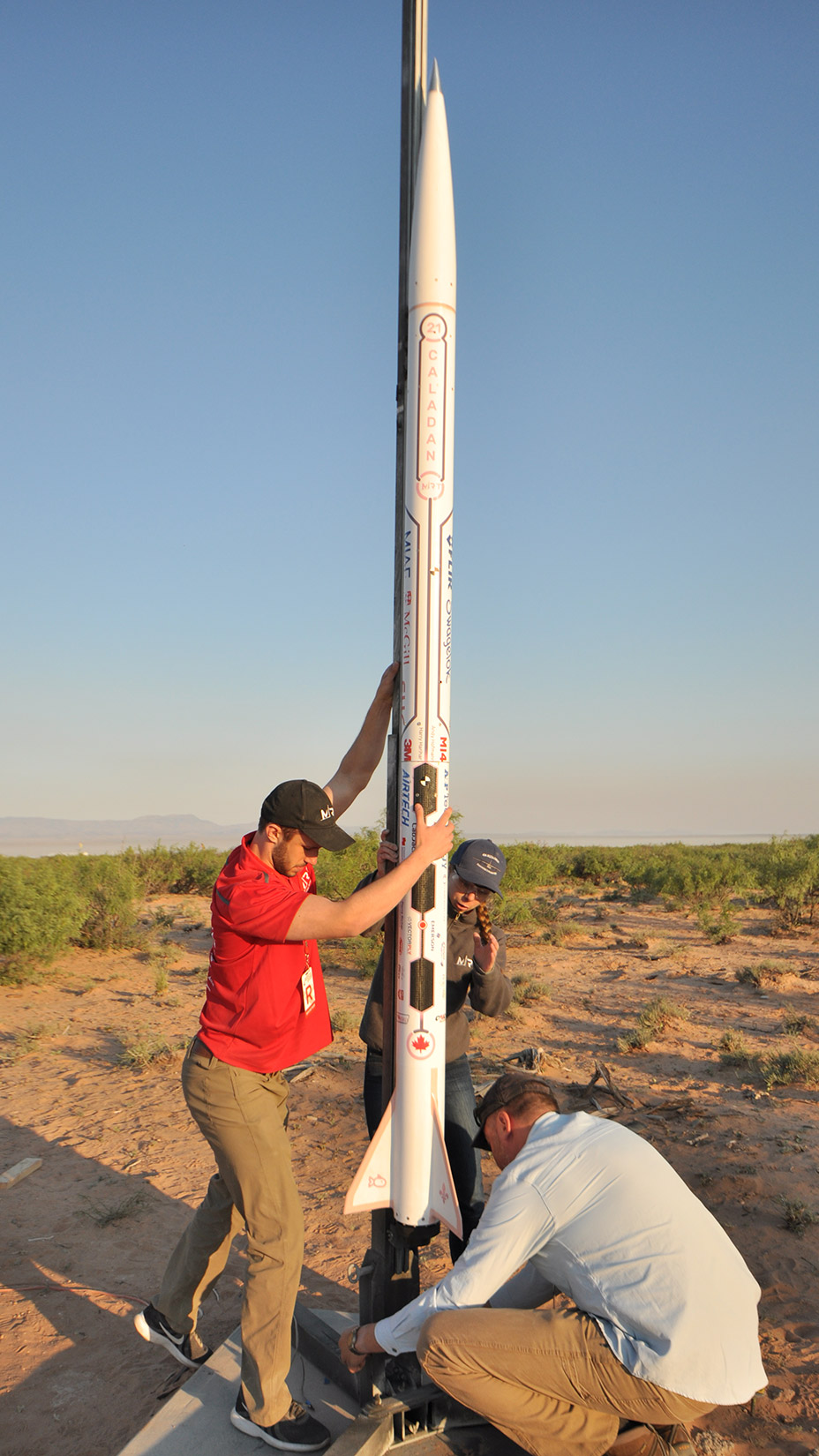
The McGill Rocket Team is no ordinary group of college students. Since 2015, a rotating mix of 100 top-notch engineering students — driven by a passion for learning and innovation — has studied the design, manufacturing, launch, and recovery of rocket-related technologies. With sponsorship from Digi, the team has participated in international competitions that promote aerospace engineering and encourage the future leaders of this industry.
Aiming for New Heights
Drawn by the opportunity to learn about rocketry and compete at a world-class launch facility in New Mexico against more than 100 other college teams, each year the McGill Rocket Team embarks on a new mission: to reach for the stars. Team members work in separate groups specializing in several areas — payload, propulsion, aerostructures, and avionics — aiming to take top honors at the Space Port America Cup.
 Most recently, the McGill Rocket Team entered the competition for solid-fueled rockets that reach 30,000 feet. It was an ambitious effort for the team across all disciplines — including avionics, which was co-led by Mei Qi Tang, a third-year student.
Most recently, the McGill Rocket Team entered the competition for solid-fueled rockets that reach 30,000 feet. It was an ambitious effort for the team across all disciplines — including avionics, which was co-led by Mei Qi Tang, a third-year student.
“We started by reviewing McGill’s efforts from earlier years,” she said. “In a previous year, we’d won at the 10,000-foot level, however, so we wanted to push ourselves to compete at a higher altitude — and that required an entirely new design.”
The element that McGill retained from past projects was a Digi radio which is designed into the 3-pound avionics package. Radio communication is essential, since the competition rules state that the rocket must be fully recovered and reused. Radio-transmission of GPS data helps the team locate the rocket post-launch.
“We previously used the Digi XBee® 900 in our 10,000-foot competition,” Tang said. “However, the difference in altitude created some challenges. When we reach 30,000 feet, there are higher drifts and a wider recovery radius — as much as 10 to 15 kilometers.” For the new design, the McGill avionics team opted for the Digi XTend 900 MHz radio, provided by Digi on a sponsorship basis.
The Digi XTend module utilizes Frequency Hopping Spread Spectrum (FHSS) agility to avoid interference by hopping to a new frequency on every packet transmission or re-transmission. The transmit power is software-adjustable from 100 mW to 1 W — the maximum output power allowed by governments that use 900 MHz as a license-free band. The Digi XTend module provides two to eight times the range of other modules operating within the unlicensed 900 MHz frequency band — up to 40 miles — thanks to proprietary technologies, including superior receiver sensitivity, interference immunity, modulation/demodulation techniques and more.
3… 2… 1…
For about one month, the avionics team configured and tested the Digi XTend module using Digi XCTU® software, a free configuration and testing toolset that enables developers to set up, configure and test Digi RF modules. “When you’re just learning how to use radios, Digi XCTU is the tool of choice,” said Tang. “We used it to develop a prototype very quickly. The whole testing and development process was very fast.”
 She explained that many of the team members are underclassmen, and, with just the user manual and no further instruction, they were able to step right in and figure things out quickly. “You don’t need a deep technical background to use the software and get the radio configured and integrated. We were able to configure the Digi XTend radio to transmit not only GPS coordinates but also time, altitude (calculated using air pressure), temperature, acceleration, magnetic field, and orientation using a gyroscope.”
She explained that many of the team members are underclassmen, and, with just the user manual and no further instruction, they were able to step right in and figure things out quickly. “You don’t need a deep technical background to use the software and get the radio configured and integrated. We were able to configure the Digi XTend radio to transmit not only GPS coordinates but also time, altitude (calculated using air pressure), temperature, acceleration, magnetic field, and orientation using a gyroscope.”
The McGill rocket — 11.1 feet high, with a 5-inch diameter — was soon ready for launch and a peak velocity of Mach 1.7. Using a lower data rate and the maximum output of 1 watt increased the Digi XTend signal range. The entire avionics package was ruggedized as well. “The rocket reaches supersonic speeds, so there’s lots of vibration,” said Tang. “And during the descent, we deploy two parachutes, which creates a big drag, so the radio has to withstand that. Without a doubt, the range, power profile, and cost make the Digi XTend an excellent choice for this application.”
She also said that, in particular, the team enjoyed the benefits of using Digi XCTU for the development environment, as it provided all of the resources needed and shortened the learning curve for the students.
“And, of course, we’re very grateful to all of our sponsors, including Digi. We really could not achieve this without them.”